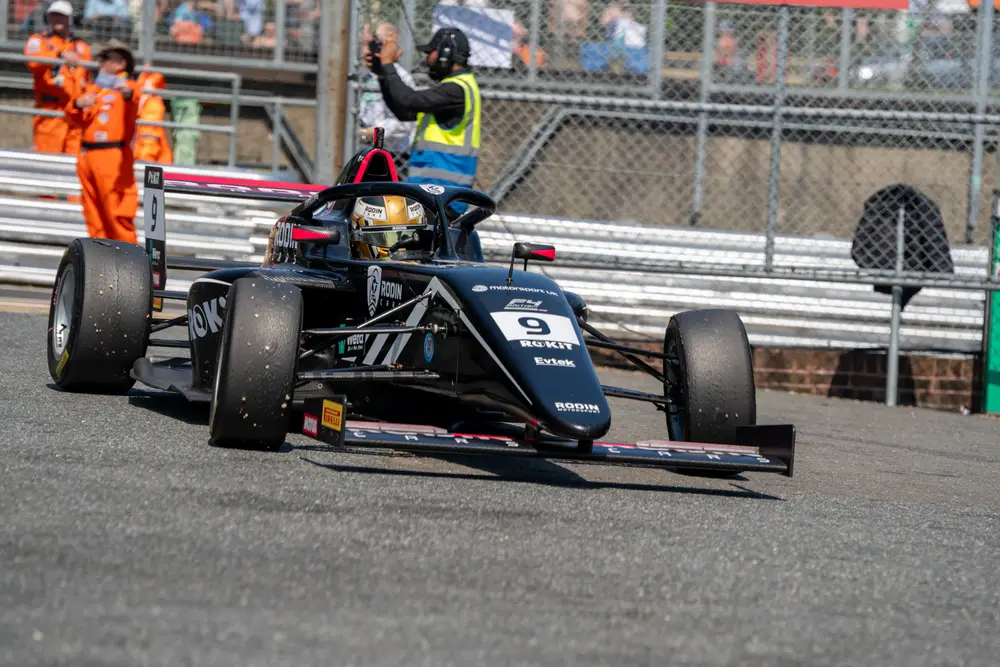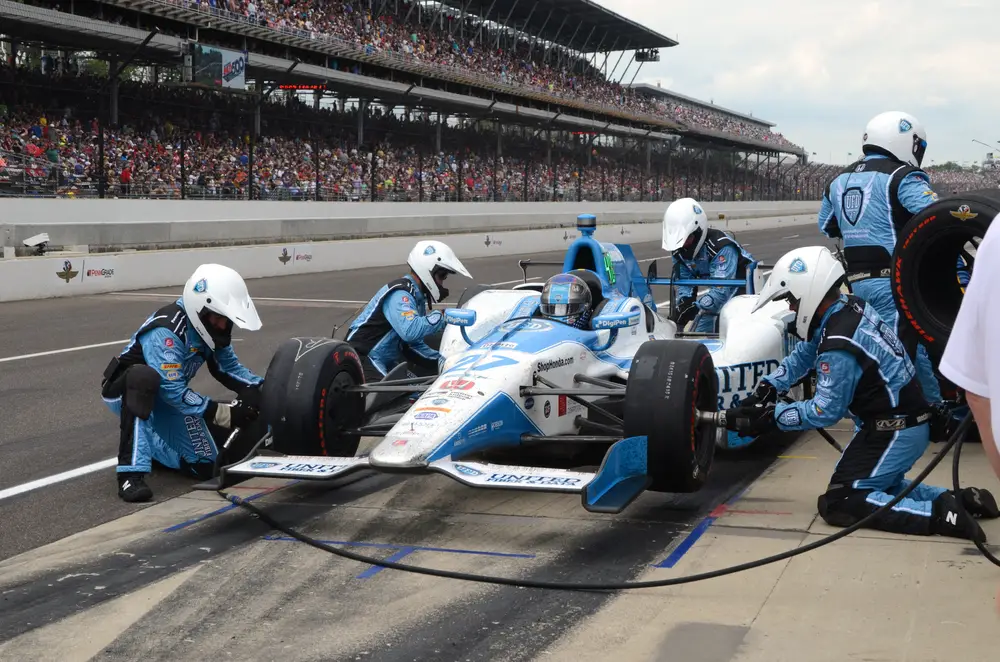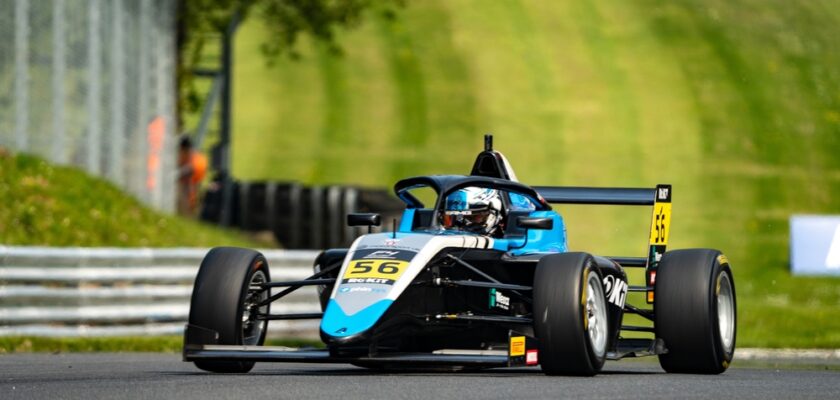The IndyCar Series, also known as IndyCar, is one of the most exciting motor racing competitions in the world. The category, which was born in the United States, attracts fans from all over the world and is characterized by its races on oval and mixed circuits.
To guarantee the safety of the drivers and equality in the competitions, the IndyCar Series has a strict set of rules that all participants must follow to the letter. These rules cover everything from the technical specifications of the cars to conduct during races.
Understanding the rules of the IndyCar Series is therefore crucial not only for the participants, but also for fans who want to better appreciate the races and understand how the championships work.
It’s time, then, to find out what the rules of the IndyCar Series are and stay on top of the sport!
Open your Betano account and get up to 1,000 reais in bonuses.PIX payments, live games and super odds! Click here to open your account!

IndyCar rules: complete list
- Cars
- Qualification
- Pit stop
- Conduct on the track
- Scoring
- Penalties and infractions
IndyCar rules: cars
- Chassis
- Engine
- Aerodynamics
- Weight
Indy cars have to meet a series of very strict technical specifications. These vehicles are then designed to be extremely fast and safe, incorporating powerful technological advances. Check out the main specifications below:
Chassis
In the IndyCar Series, all the cars use the same chassis, the Dallara IR-18, thus ensuring a level playing field between the teams.
Engines
Indy car engines are supplied by the Honda and Chevrolet manufacturers and have a power output of around 700 horsepower.
Aerodynamics
The aerodynamics of the cars used in the IndyCar Series are carefully regulated to maintain a balance between speed and safety.
Weight
The minimum weight of the car, including the driver, is strictly controlled to ensure competitiveness and safety during races.
IndyCar rules: qualifying
- Oval circuits
- Mixed circuits
In the IndyCar Series, qualifying is what determines the starting position of the drivers in the race. This process is extremely important, as a good starting position can significantly influence the performance of a race within the competition.
Qualifying rules vary according to the type of circuit, which can be oval or mixed.
Oval circuits
On oval circuits, the drivers do two fast laps, and the average of these laps determines the starting position.
Mixed circuits
On mixed circuits, the drivers take part in a qualifying session divided into segments, with the fastest drivers advancing to the next stage until the final grid is set.
IndyCar rules: pit stop
- Speed in the pit lane
- Number of team members
- Safety procedures
Pit stops are very critical moments during an IndyCar race, as they require well-executed strategies that can make the difference in determining the champion. The main rules are:
Speed in the pit lane
In the IndyCar Series, there is a strict speed limit in the pit area, which varies according to the circuit.
Number of team members
Only a limited number of team members can work on the car during an IndyCar pit stop. At each stop, tasks such as changing tires and refueling are carried out.
Safety procedures
The IndyCar Series also requires a list of safety procedures that must be strictly followed to avoid accidents, especially serious ones.

IndyCar rules: conduct on the track
- Overtaking
- Position defense
- Flags
The conduct of riders on the track is strictly monitored to ensure the safety of riders, staff and spectators. The rules of conduct include:
Overtaking
In the IndyCar Series, overtaking must be carried out safely, without putting other drivers at risk.
Position defense
There are clear limits on how a driver can defend his position in IndyCar, mainly to avoid dangerous maneuvers.
Flags
IndyCar drivers must obey flag signals, such as the yellow flag (danger on the track) and the blue flag (let the fastest car overtake).
IndyCar rules: scoring
- Points distribution
- Additional points
- Penalties
The scoring system in the IndyCar Series has been developed to reward consistency and performance throughout the season. Read more:
Points distribution
In IndyCar races, points are awarded to drivers based on their finishing positions in the races, with the winner receiving the most points, obviously.
Additional points
In IndyCar, additional points can be earned for achievements such as pole position, most laps led and other more specific achievements.
Penalties
Penalties in the IndyCar Series can result in the loss of points, which has a negative impact on the driver’s ranking during the season.
IndyCar rules: penalties and infractions
- Drive-through
- Stop-and-go
- Loss of positions
- Fines
To maintain order and safety at the races, the IndyCar Series has a very strict penalty system. The penalties range from warnings to disqualifications, depending on the seriousness of the infraction.
The main penalties are as follows:
Drive-through
In this penalty, the driver must pass through the pits without stopping, which can jeopardize his position in the race.
Stop-and-go
In stop-and-go, the driver must stop in the pits for a certain time before returning to the track, losing race time.
Loss of positions
Penalties may result in the loss of positions on the starting grid or in the final race standings.
Fines
In the case of serious infringements, financial fines can be imposed on teams and drivers.
The possible infractions are as follows:
- Overtaking under a yellow flag
- Speeding in the pit lane
- Ignoring flags and stewards’ signals
- Unsportsmanlike conduct
- Violation of technical rules
IndyCar rules: complete list
- Cars
- Qualification
- Pit stop
- Conduct on the track
- Scoring
- Penalties and infractions
IndyCar rules
These are the rules of the IndyCar Series! The rules are detailed and strict to guarantee the safety of the drivers in the competitions. And if you enjoyed this content, be sure to keep following the site to stay up to date with the sport and many others!



